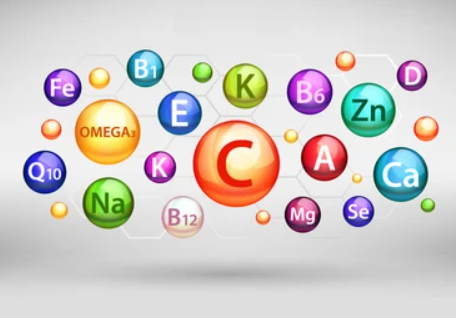Vitamin Additives
The Key Importance of Vitamins as Food Additives

Vitamin is a class of trace organic compounds that are indispensable for maintaining the normal physiological functions of humans and animals. Vitamins do not participate in the formation of human cells in the body, nor are they a source of energy. It is a type of regulatory substance that plays an important role in the growth, metabolism, and development of the human body. The body cannot synthesize or synthesize vitamins in insufficient amounts, so vitamins are usually obtained from food. The human body needs 13 kinds of vitamins, namely vitamin A, vitamin B, vitamin C, vitamin D, and vitamin E, etc. Although the human body has a small demand for vitamins, once a long-term lack of certain vitamins will cause physiological dysfunction and certain diseases. Given the importance of vitamins in maintaining the health of the body, it is used as a food additive and added to various foods to ensure that the body takes in sufficient amounts of vitamins. However, excessive intake of vitamins is not conducive to health.
The Common Types of Vitamin Additives That Can Be Detected by ELISA
Vitamins are a huge family. There are dozens of vitamins currently known, which can be divided into two categories: fat-soluble and water-soluble. The following briefly lists the types of vitamins commonly used as food additives.
Vitamin A
Vitamin A is unsaturated monohydric alcohol, which is fat-soluble. It is easily oxidized in the air or destroyed by ultraviolet rays and loses its physiological function. Vitamin A has two forms, A1 and A2. Natural vitamin A mainly exists in the liver, blood and retina in the form of A1, and is called retinol. A2 is mainly found in the liver of freshwater fish. Vitamin A is the raw material of rhodopsin in the eyes, and it is also an essential material for skin tissue. People who lack it will suffer from dry eye disease and night blindness.
Vitamin B
Vitamin B family is a water-soluble vitamin that mainly includes vitamin B1, vitamin B2, vitamin B3, vitamin B5, vitamin B6, vitamin B9, and vitamin B12. Vitamin B is mostly a coenzyme involved in the body's key metabolic reactions. It is involved in the metabolism of sugar, protein, and fat in the body and is an essential nutrient for the human body. Vitamin B family is rich in animal liver, lean meat, poultry eggs, milk and other foods. Vitamin B can protect the liver. When vitamin B is lacking, the liver cannot work normally.
Vitamin D
Vitamin D is a steroid derivative and is a fat-soluble vitamin. Natural vitamin D has two forms: vitamin D2 (ergocalciferol) and vitamin D3 (cholecalciferol), which are mostly found in cod liver oil, egg yolk, dairy products, and yeast, etc. The physiological function of vitamin D is to help humans and animals absorb calcium and phosphorus. If vitamin D is lacking, the calcium and phosphorus in the blood will be lower than normal, leading to soft and deformed bones. This is called rickets in children and osteomalacia in pregnant women.
The Advantages of Using ELISA to Detect Vitamin Additives
- Low testing cost and not restricted by site
- Can quantitatively detect vitamin additives in food
- Can provide a quick and easy method for food safety testing
Creative Diagnostics has been committed to providing ELISA kits for the rapid detection of vitamin additives. Supported by rich related R&D experience and diversified ELISA kits products, we provide high-quality customized ELISA kits services, professional ELISA testing services, and believable ELISA development services related to the detection of the vitamin in food. If you wish a lot of careful data, please contact us.
References
- Dawson, M.I. The importance of vitamin A in nutrition. Curr Pharm Des. 2000, 6(3): 311-325.
- Rahman, S.; Baumgartner, M. B Vitamins: Small molecules, big effects. J Inherit Metab Dis. 2019, 42(4): 579-580.
- Uday, S.; Högler, W. Nutritional rickets & osteomalacia: A practical approach to management. Indian J Med Res. 2020, 152(4): 356-367.
